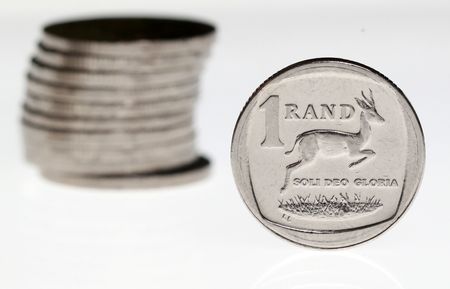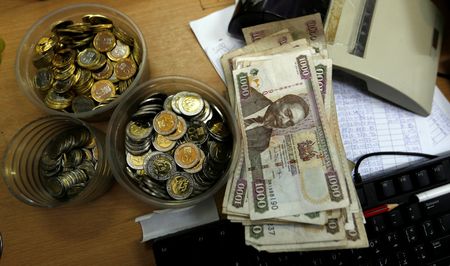By Scott DiSavino
NEW YORK (Reuters) – Oil prices climbed about 4% on Tuesday on signs of higher demand in Europe and China, rising tensions in the Middle East and as buyers emerged the day after prices collapsed to a four-year low on a decision by OPEC+ to boost output.
Brent futures rose $2.37, or 3.9%, to $62.60 a barrel at 11:12 a.m. (1512 GMT). U.S. West Texas Intermediate (WTI) crude gained $2.42, or 4.2%, to $59.55.
Both benchmarks rose out of technically oversold territory, the day after their lowest settlements since February 2021.
OPEC+, the Organization of the Petroleum Exporting Countries (OPEC) and allies like Russia, decided over the weekend to speed up oil production hikes for a second consecutive month.
“After evaluating the latest OPEC+ move to accelerate the easing of supply cuts, market players are focusing on developments in trade and the possibility … that trade deals will be reached,” said Tamas Varga, an analyst at PVM, a brokerage and consulting firm that is part of TP ICAP.
Varga also pointed to the rise in geopolitical risk premium in the Middle East as Israel struck Iran-backed Houthi targets in Yemen as a retaliation for an assault on Ben Gurion airport.
Prices also drew support after consumers in China increased spending during the May Day celebration and as market participants returned after the five-day holiday.
“China also reopened today, and being the largest (oil) importer, buyers would have likely jumped to secure oil at current low levels,” said Priyanka Sachdeva, senior market analyst at Phillip Nova.
In the U.S., the dollar fell to a one-week low against a basket of currencies as investors grew impatient about trade deals. A weaker U.S. currency makes dollar-priced oil less expensive for buyers using other currencies.
GROWTH IN EUROPE?
In Europe, companies are expected to report growth of 0.4% in first-quarter earnings, LSEG I/B/E/S data showed, an improvement over the 1.7% drop analysts had expected a week ago.
The European Union trade chief said the 27-nation bloc is under no pressure to accept an unfair tariff deal with the U.S.
The European Commission, meanwhile, proposed adding more individuals and over 100 vessels linked to Russia’s shadow fleet to its 17th package of sanctions against Moscow in response to Russia’s 2022 invasion of Ukraine.
Trump said late on Monday he would announce pharma tariffs over the next two weeks, his latest action on levies that have roiled global financial markets over the past months.
The U.S. trade deficit widened to a record high in March as businesses boosted imports of goods ahead of tariffs, which dragged gross domestic product (GDP) into negative terrain in the first quarter for the first time in three years.
“We expect the U.S. economy to avoid a full-blown recession this year as trade deals are agreed and tariffs are reduced, but the expansion of GDP is likely to slow significantly from 2.8% last year to around 1.5% this year,” Solita Marcelli, chief investment officer Americas, UBS Global Wealth Management said in a note.
The U.S. Federal Reserve is widely expected to leave interest rates unchanged on Wednesday as tariffs roil the economic outlook.
An interest rate cut could spur economic growth and thus, oil demand. But tariffs raise prices, and the Fed uses higher interest rates to combat inflation.
(Reporting by Scott DiSavino in New York and Anna Hirtenstein in London; Additional reporting by Enes Tunagur in London and Siyi Liu in Singapore; Editing by Muralikumar Anantharaman, Lincoln Feast, Sharon Singleton, Paul Simao and David Gregorio)







